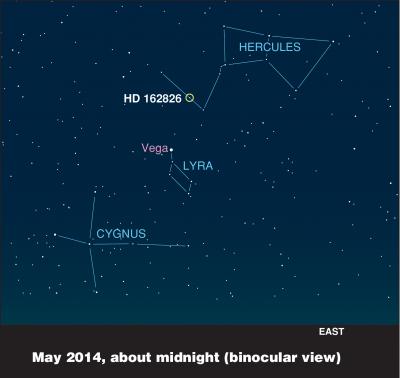
 A team of researchers led by University of Texas at Austin astronomer Ivan Ramirez has identified the first “sibling” of the Sun—a star that was almost certainly born from the same cloud of gas and dust as our star. Ramirez’ methods will help other astronomers find other “solar siblings,” work that could lead to an understanding of how and where our Sun formed, and how our solar system became hospitable for life. The work will be published in the June 1 issue of The Astrophysical Journal.
A team of researchers led by University of Texas at Austin astronomer Ivan Ramirez has identified the first “sibling” of the Sun—a star that was almost certainly born from the same cloud of gas and dust as our star. Ramirez’ methods will help other astronomers find other “solar siblings,” work that could lead to an understanding of how and where our Sun formed, and how our solar system became hospitable for life. The work will be published in the June 1 issue of The Astrophysical Journal.
“We want to know where we were born,” Ramirez said. “If we can figure out in what part of the galaxy the Sun formed, we can constrain conditions on the early solar system. That could help us understand why we are here.”
Additionally, there is a chance, “small, but not zero,” Ramirez said, that these solar sibling stars could host planets that harbor life. In their earliest days within their birth cluster, he explains, collisions could have knocked chunks off of planets, and these fragments could have travelled between solar systems, and perhaps even may have been responsible for bringing primitive life to Earth. Or, fragments from Earth could have transported life to planets orbiting solar siblings. “So it could be argued that solar siblings are key candidates in the search for extraterrestrial life,” Ramirez said.
The solar sibling his team identified is a star called HD 162826, a star 15 percent more massive than the Sun, located 110 light-years away in the constellation Hercules. The star is not visible to the unaided eye, but easily can be seen with low-power binoculars, not far from the bright star Vega.
The team identified HD 162826 as the Sun’s sibling by following up on 30 possible candidates found by several groups around the world looking for solar siblings. Ramirez’ team studied 23 of these stars in depth with the Harlan J. Smith Telescope at McDonald Observatory, and the remaining stars (visible only from the southern hemisphere) with the Clay Magellan Telescope at Las Campanas Observatory in Chile. All of these observations used high-resolution spectroscopy to get a deep understanding of the stars’ chemical make-up.
But several factors are needed to really pin down a solar sibling, Ramirez said. In addition to chemical analysis, his team also included information about the stars’ orbits—where they had been and where they are going in their paths around the center of the Milky Way galaxy. The team’s experts in this field, which is called “dynamics,” are A. T. Bajkova of the Pulkovo Astronomical Observatory in St. Petersburg, Russia, and V. V. Bobylev of St. Petersburg State University.
Combining information on both chemical make-up and dynamics of the candidates narrowed the field down to one star: HD 162826.
While the finding of a single solar sibling is intriguing, Ramirez points out that the project has a larger purpose: to create a road map for how to identify solar siblings, in preparation for the flood of data expected from future surveys.
“The idea is that the Sun was born in a cluster with a thousand or a hundred thousand stars. This cluster, which formed more than 4.5 billion years ago, has since broken up,” he says. “A lot of things can happen in that amount of time.” The member stars have broken off into their own orbits around the galactic center, taking them to different parts of the Milky Way today. A few, like HD 162826, are still nearby. Others are much farther afield.


Be the first to comment